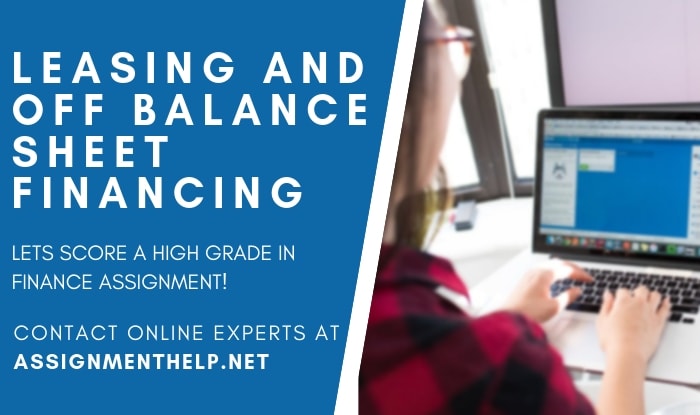Leasing And Off Balance Sheet Financing Assignment Help
Leasing and Off-Balance-Sheet Financing
Introduction

A company wishing to obtain the use of an asset can borrow money and purchase the asset. Alternatively, a company can lease the asset for some finite period of time or lease the asset as a means of buying the asset over time. The following paragraphs first describe some advantages to leasing from the viewpoint of the lessee (the party obtaining the use of an asset through a lease) and then describe the accounting treatment of different types of leases. The final portion of this section evaluates leases from the perspective of the owner of the asset.
Classification of leases
Firms generally acquire the right to use property, plant and equipment by an outright purchase which transfers legal ownership to the firm. This will involve a potentially large capital outlay and although the firm will receive the full benefits of ownership they will also take on the associated risks. These risks have grown with rapid technological change and the internationalization of product markets and resources. In some case firms decide to use a lease agreement to acquire the use of an asset (and some or all of the benefits and risks of owning the asset) through a lease agreement. There are two types of lease agreements, operating and capital (also called finance) leases.
Lessees must disclose in the notes to account future lease obligations for the next five years.
Leasing And Off Balance Sheet Financing Assignment Help By Online Tutoring and Guided Sessions at AssignmentHelp.Net



